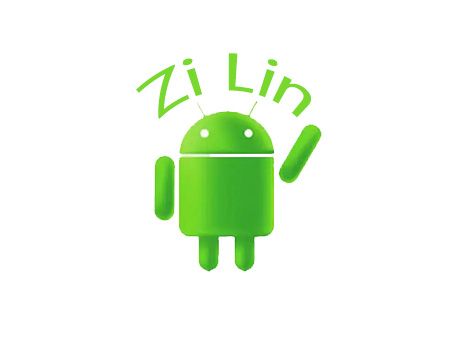C++笔记1引用
C++笔记引用的使用#include <iostream>//标准命名空间(包含很多标准定义)using namespace std;const double PI = 3.14;//圆class MyCircle{private://半径double m_r;//面积double m_s;
·
C++笔记
引用的使用
- 引用必须有值,不能为空
- 引用是变量的别名,指针的值是地址
#include <iostream>
//标准命名空间(包含很多标准定义)
using namespace std;
const double PI = 3.14;
//圆
class MyCircle
{
private:
//半径
double m_r;
//面积
double m_s;
public:
//设置半径
void setR(double r)
{
m_r = r;
}
//获取圆的面积
double getS()
{
m_s = PI * m_r * m_r;
return m_s;
}
};
void main()
{
MyCircle c1;
c1.setR(4);
cout<<"圆的面积:"<<c1.getS()<<endl;
system("pause");
}
//命名空间提供了更小范围的作用域
namespace NSP_A
{
int a = 9;
}
namespace NSP_B
{
int a = 12;
//命名空间嵌套
namespace NSP_C
{
struct Teacher
{
char name[20];
int age;
};
}
}
void main()
{
//使用命名空间
using namespace NSP_A;
using namespace NSP_B;
cout << NSP_A::a << endl;
cout << NSP_B::a << endl;
//system.out.println() line
using NSP_B::NSP_C::Teacher;
Teacher t1;
t1.age = 12;
system("pause");
}
//类
class MyTeacher
{
private:
public:
protected:
};
//结构体
struct MySuperTeacher
{
private:
char name[20];
int age;
public:
void say()
{
cout << "说话" << endl;
}
};
void main()
{
MySuperTeacher t1;
t1.say();
system("pause");
}
void main()
{
//为 1(true) 或者 0(false)
bool isSingle = -17;
cout << isSingle << endl;
cout << sizeof(bool) << endl;
system("pause");
}
void main()
{
int a = 10;
int b = 20;
//找到两个数中较大的数,重新赋值为30
//((a > b) ? a : b) = 30;
//通过C完成给三元运算的结果赋值
*((a > b) ? &a : &b) = 30;
printf("%d,%d\n",a,b);
system("pause");
}
//引用
void main()
{
int a = 10; //门牌号(内存空间的别名,可不可以有多个名字?)
//C语言正常语法 &表示:取地址
//C++ &表示:引用
int &b = a; //b实际上就是另外一个别名
//引用必须要初始化
//int &c;
cout << b << endl;
system("pause");
}
//指针交换值
void swap1(int *a, int *b)
{
int c = 0;
c = *a;
*a = *b;
*b = c;
}
//引用交换
void swap2(int &a, int &b)
{
int c = 0;
c = a;
a = b;
b = c;
}
void main()
{
int x = 10;
int y = 38;
printf("%d,%d\n", x, y);
//swap1(&x,&y);
//a 成了x的别名, b 成了y的别名
swap2(x,y);
printf("%d,%d\n",x,y);
system("pause");
}
//复杂类型的引用
struct Teacher
{
char name[20];
int age;
};
void myprint_0(Teacher p)
{
//p只是t1的拷贝,并不会影响t1
cout << p.age << endl;
p.age = 25;
}
void myprint_1(Teacher *p)
{
cout << p->age << endl;
p->age = 35;
}
void myprint_2(Teacher &p)
{
cout << p.age << endl;
p.age = 45;
}
void main()
{
Teacher t1;
t1.age = 20;
myprint_0(t1);
cout << t1.age << endl;
myprint_1(&t1);
cout << t1.age << endl;
myprint_2(t1);
cout << t1.age << endl;
system("pause");
}
//引用的探索发现
struct Teacher
{
char &a;
int &b;
};
void main()
{
int a = 10;
//int &b; //必须要赋值,很像常量
//const MAX;
int &b = a;
//引用的大小,很像指针
Teacher t1;
cout << sizeof(t1.a) << endl;
system("pause");
}
//引用的本质是:指针常量
void modifyA(int &a)
{
a = 100;
}
void modifyB(int * const a)
{
*a = 150;
}
void main()
{
int a = 10;
int b = 20;
//指针常量(这个指针所保存的地址不能改变)
int * const p1 = &a;
//p1 = &b; //不能改变
int x = 5;
cout << x << endl;
modifyA(x);
cout << x << endl;
modifyB(&x);
cout << x << endl;
//int &c = a;
//c = b;
system("pause");
}
//函数的返回值为引用
/*
int& get1()
{
int a = 10; //如果返回内存栈上的数据引用,程序是有隐患
return a;
}
int* get2()
{
int a = 10;
return &a;
}
void main()
{
cout << get1() << endl;
int &a = get1(); //仍然不行 有隐患
cout << (*get2()) << endl; //有隐患
system("pause");
}
*/
/*
//返回静态变量 或者全局变量
int& get1()
{
static int a = 10;
a++;
//int &b = a;
//return b;
cout << a << endl;
return a;// 自动 转存 &a
}
void main()
{
//返回静态变量
int a = get1();
cout << a << endl;
a++;
cout << a << endl;
//函数返回值是一个引用,并且当左值
get1() = 100;
get1();
system("pause");
}
*/
更多推荐
 已为社区贡献2条内容
已为社区贡献2条内容









所有评论(0)